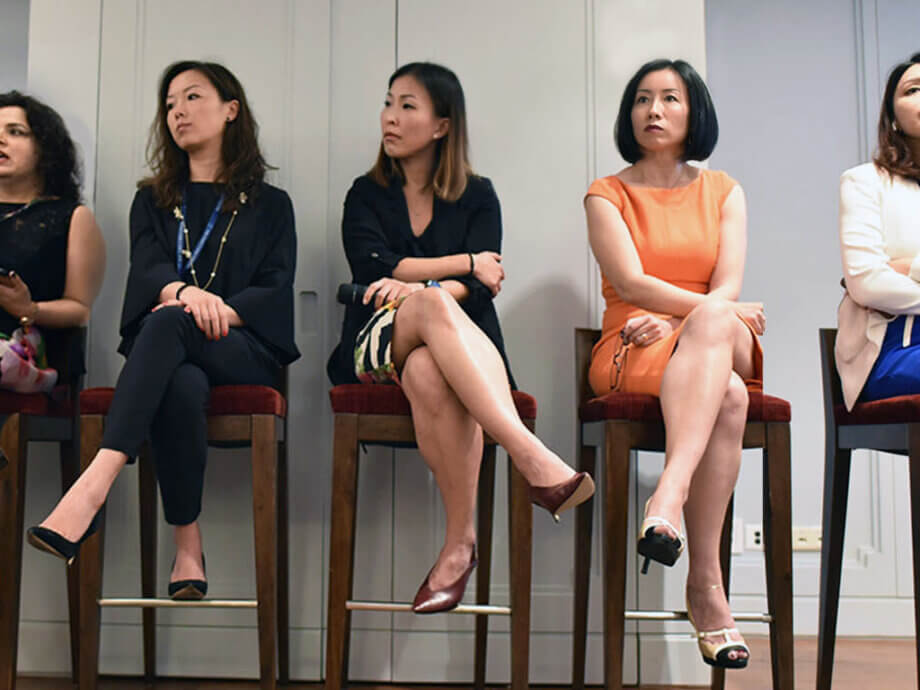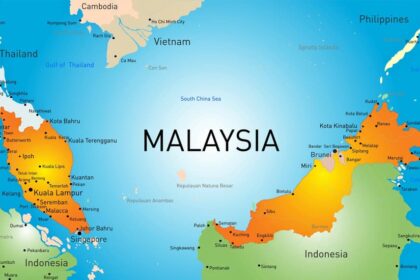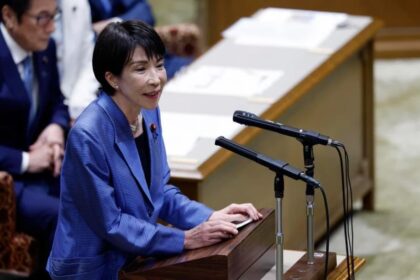Female Executive Representation in South Korea Hits Record High
South Korea has reached a significant milestone in corporate gender diversity: for the first time, women now make up over 8 percent of executives at the nation’s largest companies. According to data from the corporate tracker Leaders Index, an analysis of 376 of Korea’s top 500 companies by revenue found that 1,210 out of 15,016 executives were women as of the first half of this year. This marks a dramatic increase from just 3.8 percent in 2019, more than doubling female representation in less than six years.
- Female Executive Representation in South Korea Hits Record High
- What’s Driving the Increase in Female Executives?
- Are Women Gaining Real Power in Corporate Korea?
- Case Study: Hyundai Motor’s Progress and Pay Parity
- How Does South Korea Compare Internationally?
- Why Does Gender Diversity in Leadership Matter?
- Barriers to Advancement: Culture, Policy, and Pipeline
- What’s Being Done to Accelerate Change?
- Societal Attitudes: Is Korea Ready for More Women Leaders?
- Lessons from Abroad: What Can Korea Learn?
- In Summary
This progress reflects both regulatory changes and evolving corporate attitudes, but the numbers also reveal that most female executives remain on the periphery of real decision-making power. The majority serve as outside directors or non-board members, roles that, while important, often lack the influence of core leadership positions.
What’s Driving the Increase in Female Executives?
The surge in female executive appointments is closely linked to legislative reforms. In August 2022, South Korea revised its Capital Markets Act, banning companies from forming boards composed entirely of one gender. This legal requirement forced many large firms to appoint at least one woman to their boards, accelerating the rise in female directors. The number of registered female outside directors soared from 38 in 2019 to 292 in 2024, a nearly eightfold increase.
Industry-specific trends also play a role. Sectors with strong consumer connections—such as household goods (19.5 percent female executives), pharmaceuticals (19 percent), services (13.2 percent), and food and beverages (13.1 percent)—show much higher female representation. In contrast, traditionally male-dominated fields like construction (3.7 percent), shipping and machinery (3.3 percent), and energy (3.6 percent) continue to lag far behind.
Are Women Gaining Real Power in Corporate Korea?
Despite the headline growth, a closer look at the data reveals that most female executives are not in the most influential positions. Many are outside directors—individuals who are not employees or shareholders and who, while having equal voting rights in board meetings, typically have less sway over daily operations and strategic direction. Others are unregistered executives, meaning they hold high-level titles but are not listed in the official corporate registry, further limiting their influence.
Only a small fraction of female executives are inside directors—those with direct, day-to-day management authority. Of the 1,210 female executives counted, just 52 were inside directors, and 15 of these were related to company owner families by blood. This pattern suggests that while companies are meeting the letter of the law, true gender parity in leadership remains elusive.
Case Study: Hyundai Motor’s Progress and Pay Parity
Hyundai Motor Co., one of South Korea’s flagship conglomerates, offers a telling example of both progress and ongoing challenges. In 2024, women made up 7.9 percent of Hyundai’s executive leadership, the highest in its history. Notably, female executives at Hyundai earned more on average than their male counterparts when performance bonuses were included—495.78 million won (about $362,000) compared to 462.84 million won for men.
The company has also seen a rapid increase in female employees overall, with the number of women in its global workforce rising from 8.6 percent in 2020 to 11.2 percent in 2024. Hyundai has set ambitious targets: by 2030, it aims for women to hold 15 percent of managerial and above positions in Korea and 27 percent overseas. The company’s experience demonstrates that with intentional policies and clear goals, meaningful progress is possible.
How Does South Korea Compare Internationally?
Despite recent gains, South Korea still lags behind most developed countries in female leadership. According to the Organisation for Economic Co-operation and Development (OECD), only 16.3 percent of managers in Korea were women as of 2021, compared to the OECD average of 33.7 percent. Only Japan (13.2 percent) ranked lower among the 36 countries surveyed. While Korea’s share has risen from 10.1 percent in 2011, the pace of change remains slow.
Globally, women hold about 34 percent of senior management roles, according to Grant Thornton’s 2025 Women in Business report. In the United States, women now make up 29.2 percent of chief executives, and some sectors—like finance and technology—are seeing rapid gains. However, even in countries with higher representation, true parity remains a distant goal, with projections suggesting it could take another generation to achieve equal numbers of men and women in senior leadership.
Why Does Gender Diversity in Leadership Matter?
Research consistently shows that companies with more women in leadership perform better. Bain & Company’s analysis of Korea’s top 500 public companies found that those in the top quartile for female executive representation had double the enterprise value and growth rate of those in the bottom quartile. Firms with more than 30 percent women executives were especially likely to see higher profitability.
Diverse leadership teams bring broader perspectives, foster innovation, and improve decision-making. As South Korea faces a shrinking working-age population, maximizing the potential of all talent—including women—is not just a matter of fairness but an economic necessity. Bain & Company estimates that increasing female economic participation could boost Korea’s GDP by 0.7 percentage points.
Barriers to Advancement: Culture, Policy, and Pipeline
Despite high levels of education and labor force participation among Korean women, several barriers hinder their rise to top corporate roles:
- Cultural Expectations: Traditional gender roles and expectations around family responsibilities often limit women’s career advancement, especially after marriage or childbirth.
- Work-Life Balance: The lack of flexible work arrangements and insufficient support for childcare make it difficult for women to balance professional and personal obligations.
- Promotion Practices: Unconscious bias in performance evaluations and promotion decisions can disadvantage women, particularly in male-dominated industries.
- Pipeline Issues: While women are well-represented in entry-level and mid-level roles, their numbers thin dramatically at the senior management and executive levels.
According to Bain & Company, the proportion of women in deputy and assistant manager roles in Korea is half that of other developed nations. Many companies are wary of implementing aggressive gender diversity policies for fear of backlash or accusations of reverse discrimination.
What’s Being Done to Accelerate Change?
To address these challenges, both government and industry are taking action:
- Legal Mandates: The 2022 Capital Markets Act requires large listed companies to appoint at least one female director, driving up the numbers of women on boards.
- Corporate Initiatives: Companies are introducing mentorship programs, flexible work policies, and transparent promotion criteria to support female advancement.
- Disclosure and Quotas: Experts recommend mandatory reporting of gender representation and pay gaps, as well as setting quotas for women in executive talent pools.
- Parental Leave: Expanding parental leave for men can help reduce the career interruptions that disproportionately affect women.
Industry leaders and advocacy groups stress that these efforts must be sustained and expanded. As one executive told The Korea Times, female leadership is not just a diversity issue but a “necessity for survival” in today’s competitive business environment.
Societal Attitudes: Is Korea Ready for More Women Leaders?
Public opinion in South Korea is generally supportive of gender equality in leadership. A 2023 Pew Research Center survey found that 80 percent of Koreans believe men and women make equally good political leaders. However, this belief has not yet fully translated into equal representation in business or politics. South Korea has had a female president, but women remain underrepresented in the National Assembly and in the highest corporate offices.
Changing societal attitudes is a gradual process, but the growing visibility of successful female executives and the clear business case for diversity are helping to shift perceptions.
Lessons from Abroad: What Can Korea Learn?
International experience suggests that progress on gender diversity requires a combination of legal mandates, corporate commitment, and cultural change. In the United States and parts of Europe, companies that set clear targets for female representation and invest in mentorship, networking, and retention programs see the fastest gains. External pressure from investors and clients can also drive change, as can public disclosure of diversity metrics.
Countries like Sweden, Latvia, and the United States have much higher shares of women in management, demonstrating that rapid progress is possible with the right mix of policies and incentives. However, even in these countries, women remain underrepresented at the very top, and ongoing vigilance is needed to prevent backsliding.
In Summary
- Female executive representation in South Korea’s largest companies has surpassed 8 percent for the first time, more than doubling since 2019.
- Most female executives are outside directors or non-board members, with limited influence over core business decisions.
- Legal reforms, especially the 2022 Capital Markets Act, have driven much of the recent increase in female board members.
- Consumer-facing industries have higher female executive representation, while male-dominated sectors like construction and energy lag behind.
- South Korea still trails most OECD countries in female leadership, with only 16.3 percent of managers being women.
- Research shows that companies with more women in leadership perform better financially and are more innovative.
- Barriers to advancement include cultural expectations, lack of work-life balance support, and pipeline issues.
- Government mandates, corporate initiatives, and changing societal attitudes are helping to accelerate progress, but sustained effort is needed.
- International experience suggests that clear targets, mentorship, and public disclosure are key to achieving gender parity in leadership.












